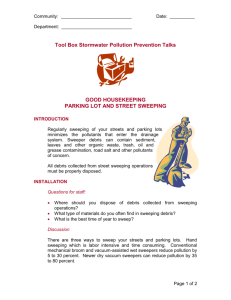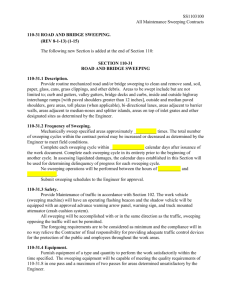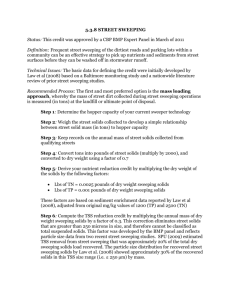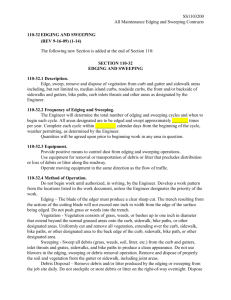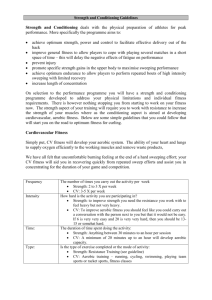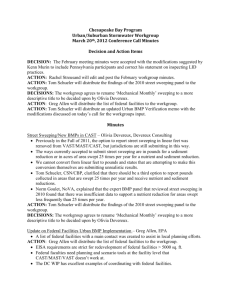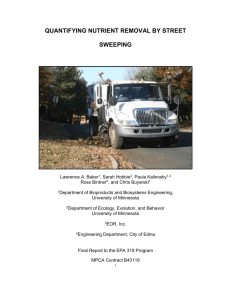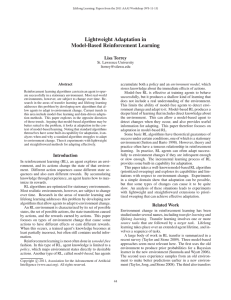Word file - World Sweeper
advertisement
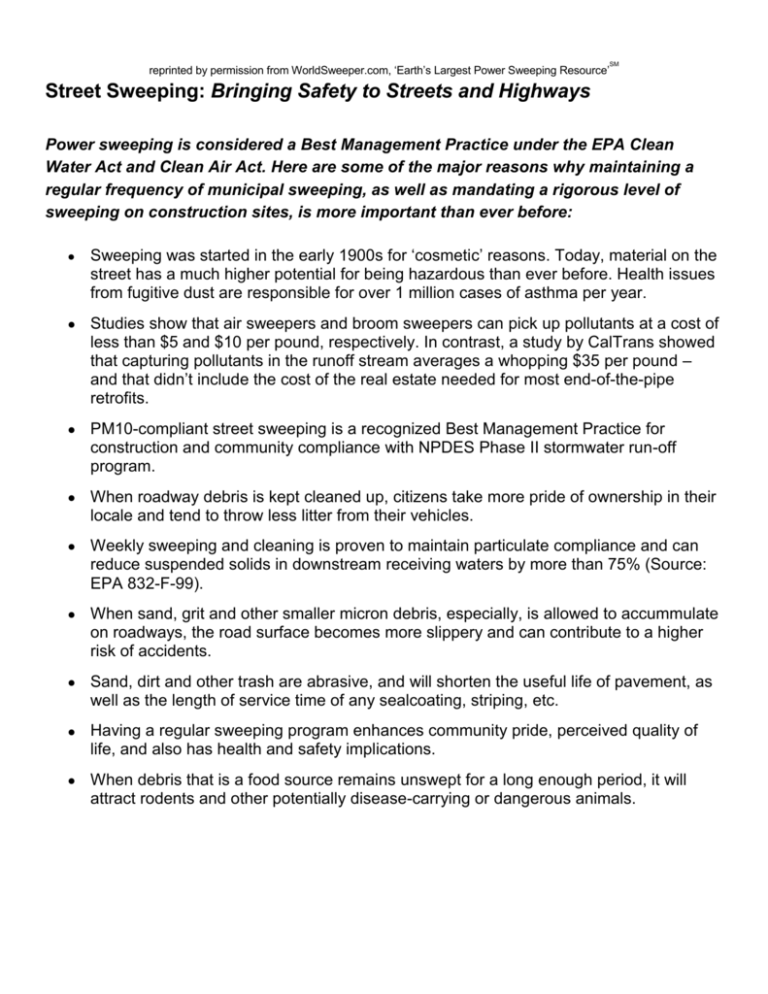
SM reprinted by permission from WorldSweeper.com, ‘Earth’s Largest Power Sweeping Resource’ Street Sweeping: Bringing Safety to Streets and Highways Power sweeping is considered a Best Management Practice under the EPA Clean Water Act and Clean Air Act. Here are some of the major reasons why maintaining a regular frequency of municipal sweeping, as well as mandating a rigorous level of sweeping on construction sites, is more important than ever before: Sweeping was started in the early 1900s for ‘cosmetic’ reasons. Today, material on the street has a much higher potential for being hazardous than ever before. Health issues from fugitive dust are responsible for over 1 million cases of asthma per year. Studies show that air sweepers and broom sweepers can pick up pollutants at a cost of less than $5 and $10 per pound, respectively. In contrast, a study by CalTrans showed that capturing pollutants in the runoff stream averages a whopping $35 per pound – and that didn’t include the cost of the real estate needed for most end-of-the-pipe retrofits. PM10-compliant street sweeping is a recognized Best Management Practice for construction and community compliance with NPDES Phase II stormwater run-off program. When roadway debris is kept cleaned up, citizens take more pride of ownership in their locale and tend to throw less litter from their vehicles. Weekly sweeping and cleaning is proven to maintain particulate compliance and can reduce suspended solids in downstream receiving waters by more than 75% (Source: EPA 832-F-99). When sand, grit and other smaller micron debris, especially, is allowed to accummulate on roadways, the road surface becomes more slippery and can contribute to a higher risk of accidents. Sand, dirt and other trash are abrasive, and will shorten the useful life of pavement, as well as the length of service time of any sealcoating, striping, etc. Having a regular sweeping program enhances community pride, perceived quality of life, and also has health and safety implications. When debris that is a food source remains unswept for a long enough period, it will attract rodents and other potentially disease-carrying or dangerous animals.
